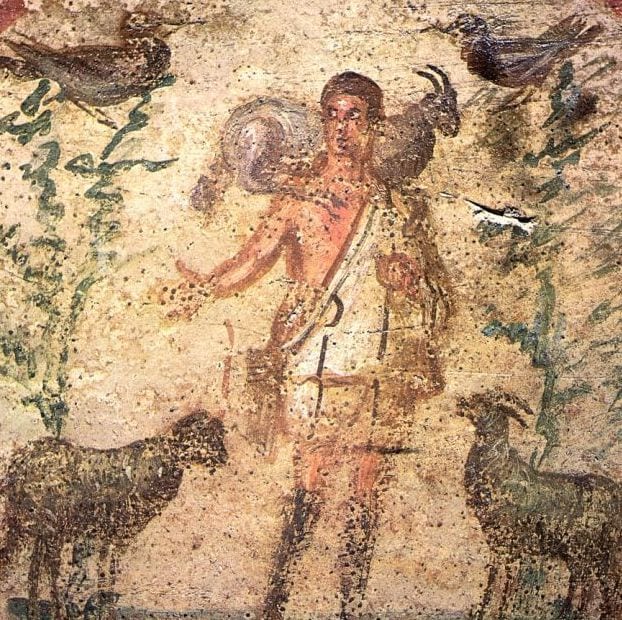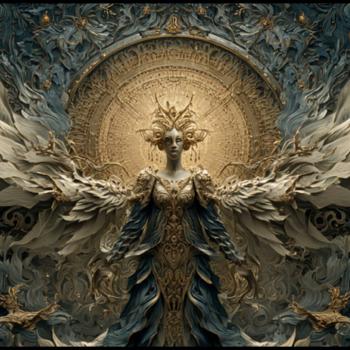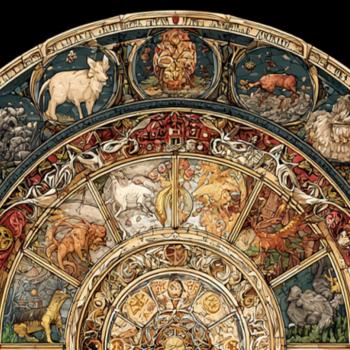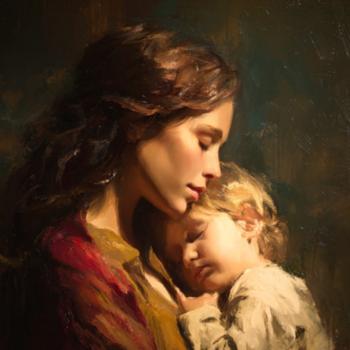I’m currently reading a book about the early Christian church and came across this amazing section about the Christian Catacombs:
“It is well known that from the end of the First to the end of the Fourth Century, the early Christians buried their dead…in subterranean galleries excavated in the soft rock that underlies Rome. These ancient cemeteries were first uncovered in 1578…more than six, some estimates say eight million bodies are known to have been buried between AD 72 and AD 410…the emblems and inscriptions are most suggestive. The principal device [image], scratched on slabs, carved on utensils and rings, and seen almost everywhere is the Good Shepherd…but most striking of all, he is found with a goat on his shoulder; which teaches us that even the wicked were at that early date regarded as objects of the Savior’s solicitude, after departing from this life.” [“Universalism: The Prevailing Doctrine of the Christian Church During Its First Five Hundred Years”, J.W. Hanson, Pub. 1899; pg. 28-29] [Image: Jesus as the Good Shepherd from the Catacombs]

Not only is this an awesome realization in itself, but what is also fascinating is what is missing from these catacombs: A cross.
As the author continues:
“Everywhere in the Catacombs is the anchor, emblem of the hope which separated Christianity from Paganism. Another symbol is the fish [ICHTHUS], which plays a prominent part in Christian symbolry…these and the vine, the sheep, the dove, the ark, the palm and other emblems in the Catacombs express only hope, faith and cheerful confidence.” [pg. 29]
Furthermore, the inscriptions found in the Catacombs are most remarkable for what they don’t say. Each epitaph is full of hope and joy; nothing about suffering or pain or gloom:
“…not a word is found expressive of doubt or fear, horror or gloom, such as in subsequent generations formed the staple of the literature of death and the grave, and rendered the Christian graveyard, up to the beginning of the seventeenth century, a horrible place. The first Christians regarded the grave as the doorway into a better world, and expressed only hope and trust in their emblems and inscriptions.” [pg. 30-31]
Another scholar, John Ruskin, notes: “Not a cross as a symbol in the Catacombs. The earliest Latin cross is on the tomb of the Empress Galla Placidia, 451 AD. No picture of the crucifixion until the Ninth Century, nor any portable crucifix until long after. To the early Christians Christ was living, the one agonized hour was lost in the thought of his glory and triumph. The fall of theology and Christian thought dates from the error of dwelling upon his death instead of his life.” [pg. 33]
F.W. Farrar adds: “We find in the Catacombs neither the cross of the fifth and sixth centuries, nor the crucifixes of the twelfth, nor the torches and martyrdoms of the seventeenth, nor the skeletons of the fifteenth, nor the cypresses and death’s heads of the eighteenth. Instead of these, [we see] the symbols of beauty, hope and peace.” [pg. 34]
So, taking all of this in, it seems that those early Christians saw Jesus as a Good Shepherd who carried home even the goats into his fold, and they referenced images of the anchor, the palm, the dove, the fish, the vine and the ark in their art, but not the symbol of the cross.
Their emphasis – in life and in death – was the victory of Christ over death, and the joy and hope and life that was to be found in Christ.
Sadly, Christians slowly began to lose this great hope and joy over time and eventually traded these joyous symbols for crosses and lamentations about suffering, pain and anguish regarding both life and death.
I’m personally inspired to embrace these hopeful images of Christ as Good Shepherd who cradles the goats in his arms.
I love the idea of emphasizing the great hope we have in Christ rather than glorify suffering and pain.
We have a lot to learn from those early Christians, I think.
**
Keith Giles was formerly a licensed and ordained minister who walked away from organized church 11 years ago, to start a home fellowship that gave away 100% of the offering to the poor in the community. Today, He and his wife live in Meridian, Idaho, awaiting their next adventure.
His new book “Jesus Unbound: Liberating the Word of God from the Bible”, is available now on Amazon and features a Foreword by author Brian Zahnd.
He is also the author of the Amazon best-seller, “Jesus Untangled: Crucifying Our Politics To Pledge Allegiance To The Lamb” with a Foreword by Greg Boyd.
Keith also co-hosts the Heretic Happy Hour Podcast on iTunes and Podbean.
BONUS: Want to unlock exclusive content including blog articles, short stories, music, podcasts, videos and more? Visit my Patreon page.













